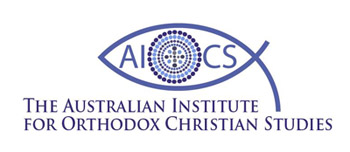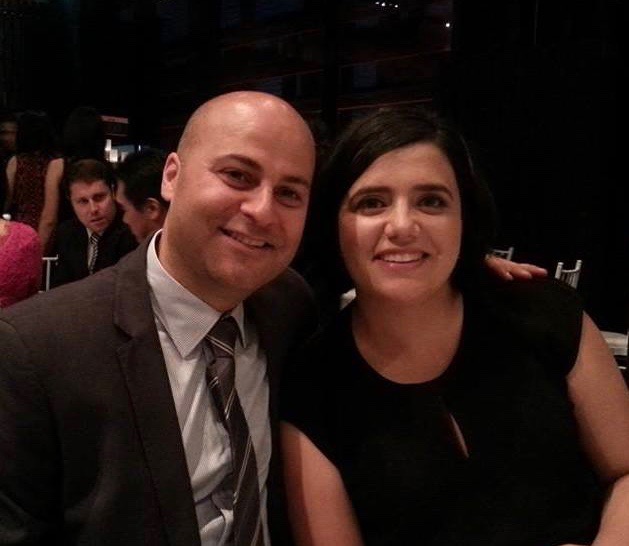The Orthodox ecclesiastical year begins, in September, with a mystical alignment of liturgical, cosmic and scriptural symbols and events. In a musical composition, the prelude acts as a short introduction to the rhythmic and melodic motifs that recur throughout an evolving piece. Adopting St Clement of Alexandria’s vision of creation, the following reflection demonstrates that the first twenty-one days of the ecclesiastical year serve as a prelude to the unfolding events in the life of Christ that will shape Christ in us.
Several years ago, Fr Doru Costache introduced me to the worldview of St Clement and since then it has permeated my thinking. The following is an attempt to briefly summarise St Clement’s melodic imagery which is taken from a chapter written by Fr Doru in a book he coedited, Alexandrian Legacy: A Critical Appraisal. St Clement compares God’s relationship with the cosmos to a harmonic symphony. Christ, the Logos, is the composer, the song and the instrument that sing the world into being. In reciprocal love, each aspect of creation freely responds to the call of its Creator with its own unique song and instrument. According to St Clement, this symphony is the “eternal song” of the natural laws, signifying the relationship between God and creation, and a “new harmony” symbolising the Gospel, and Christ’s relationship with a renewed creation. St Clement portrays the universe as a symphony where every instrument has its role to play and gifts to offer. The new creation is further symbolised by singers and instruments “rallying” around Christ and answering with the “new song” that permeates everything to defeat corruption, sin and death, and bring about harmony and salvation to the world. If we can also imagine our ecclesiastical year as a magnificent symphonic composition, we can see it evolving in a similar way.
In 1989, the Ecumenical Patriarchate dedicated the first day of the liturgical year as a prayer for creation and the protection of the environment. Although this a relatively new addition to the Orthodox liturgical calendar, it is not completely dissociated from how the liturgical year originally came about. In the early Christian centuries, the calendar of the Roman Empire, commencing on 1 September, was partly associated with the end of the summer harvests and planting of the autumn crops. Early agrarian societies were deeply attuned to the dependence of human survival and flourishing on favourable seasons. In the Church, this became a time of thanksgiving and prayer for abundant rain and seasonable weather. Also, when seen as a whole, the beginning of autumn in the northern hemisphere and spring in the southern hemisphere represents the image of Christ planted in us at the very beginning and the fruits we are called to harvest as we grow and mature in faith. However, like our ancestors, we are continually reminded that sin and corruption result in a disconnection from God and the created world, and so it is only fitting that the first day of the liturgical year commemorates where it all began.
Forest. The Field of Mars, North Ryde NSW. Photo by the author
In Scripture, the number 8 represents a new beginning, a new hope, not only the future age. As we enter the eighth day of the liturgical year, we celebrate the birth of the Theotokos, who becomes the model for the renewal of humankind: in her receiving Christ, all creation participates. As one of the hymns of the Church expresses: “All creation rejoices in you O favoured one.” Creation rejoices because by her “yes” the incarnation is fulfilled and brings about a new hope of reentering paradise.
On the fourteenth day we commemorate the life-giving cross and the prelude ends on the leave-taking of the feast, on 21 September. In Scripture, the number fourteen represents deliverance or salvation brought about by Christ’s death on the cross. At the leave-taking of the cross, we sing:
The Cross is raised on high,
And urges all creation to sing the praises of the undefiled passion
Of Him Who was lifted high upon it.
For there it was that He destroyed our slayer,
And brought the dead to life again;
And in His exceeding goodness and compassion made us beautiful,
Counting us worthy to be citizens of heaven.
The number 21 (3×7) symbolises perfection by excellence and represents the union of the Trinity which through common action produces harmony, love, compassion, and respect in the world whose symbol is 7. As the prelude closes, we are called to strive for this perfection through a process of theosis and by becoming one with God. This requires crucifying our own sinful and self-centred desires, thoughts and habits, in order for us to serving and loving our neighbour. This is beautifully expressed in the epistle reading from St Paul on the Sunday after the exaltation of the cross: “I have been crucified with Christ; it is no longer I who live, but Christ lives in me.”
As the prelude ends, the body of the musical composition begins with the feast of the conception of John the Baptist, on 23 September. Similarly, the Gospels open with the coming of the Baptist preparing the way. In the southern hemisphere, this feast coincides with the spring equinox, which marks a noticeable increase in daylight hours and warming temperatures. This reaches a climax with the summer solstice which takes place around the nativity of Christ and is observed by days with the longest daylight hours in the year. In a hymn for the feast of 23 September, we sing, “in all truth you [Elisabeth] have conceived the lamp of the Sun, and he shall send forth his light over the earth, which is afflicted with blindness.” Like John the Baptist, we are lamps that bear the light of Christ, and are called to wash away the build-up of winter dust and soot that can diminish the radiating light.
The first twenty-one days are a summary of the journey, of the events and the motifs that we will experience throughout the liturgical year. St Clement’s melodic imagery reminds us that we are not mere observers in this unending symphonic composition, but active participants. The outward cycle, that is, the changes in the natural world, scriptural readings, and feasts, should illustrate the inward renewal of our souls. This inward renewal manifests in a rally behind Christ in “new song”, which freely reciprocates God’s love and calls us to become faithful agents in God’s salvific work. The ongoing changes are not mere symbols we take out of the past, but ongoing realised events, and as St Clement would envisage a continual singing of the eternal song in harmony with the new.
27 September 2021 © AIOCS
AIOCS LTD is a not-for-profit charitable organisation that promotes the study of Orthodox Christianity, Eastern and Oriental, in Australia
For donations, please go to https://www.paypal.com/paypalme/aiocsnet or contact us at info@aiocs.net



